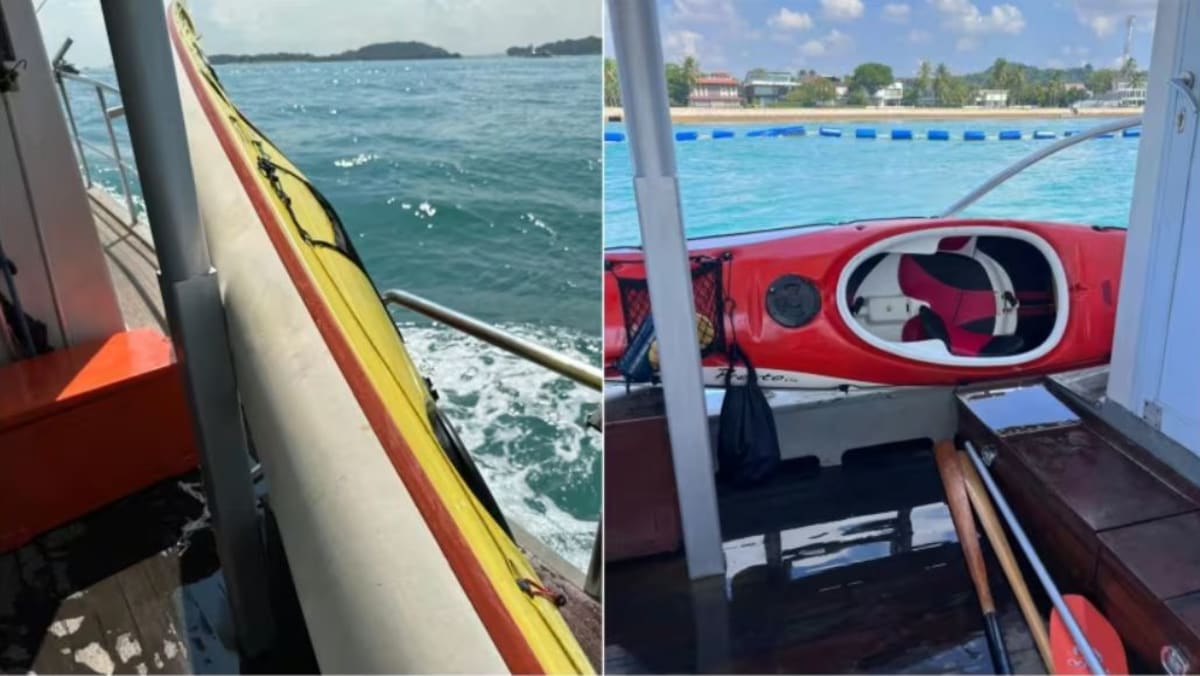SINGAPORE — A woman who went missing off Sentosa on Sunday morning (Oct 22) was trying to help a fellow kayaker when she capsized and was “swept under” by currents, a friend who helped in the search operation told CNA.
SEARCH ONGOING
Later that morning, Kayakasia’s Mr Sim and the group he was leading were paddling back from the Southern Islands at about 11.45am. He met one of the four sea kayakers and learnt that the missing woman was a friend of his.
He sought permission from the Maritime and Port Authority of Singapore (MPA) to join the search operation and also informed her husband of what had happened.
He paddled out with one of the sea kayakers to search along the paths of known currents and possible handholds, such as the anchor chain of tankers or boat tyres that someone in the water could cling on to.
“I decided to join a search because we’re familiar with how the currents are flowing. When somebody gets into the water, it’s a possibility they are just floating with the current,” he said.
“And with kayaks, we are also able to examine objects (more easily) rather than the ships the Coast Guard and MPA have. We went around to the anchorages and looked at the anchors and tyres that were tied to the boats to see whether anybody was clinging on to those handholds.”
The kayak search lasted for one-and-a-half hours until the authorities called them back.
“Today I went out because I had another trip, and I was still looking around,” said Mr Sim.
The search operation for the missing kayaker is ongoing, MPA said in its latest update on Monday.
‘DO NOT DO IT ALONE’
Water sport enthusiasts and anglers CNA spoke to said that the conditions in that area can be challenging, and this is further complicated by the floating security barrier.
Mr Aaron Ang, CEO of kayak fishing tour company Fever.sg, said that the waters just outside of Tanjong Beach to Siloso Beach are relatively safe and the currents there are manageable for beginners.
But where the kayaks capsized, off Sentosa Cove, are where the fastest currents would be and “should only be attempted with professional guides or with a paddle club”.
“However, the real danger is not the current but the stationary floating blue barriers that were installed a couple of years back,” said Mr Ng, who kayaks there twice a week.
He explained that without the barrier, the chance of being capsized by the current is relatively low.
“With the blue barriers installed, kayakers that are unfamiliar with the area can easily be pinned to the barriers. When that happens, there’s almost a 100 per cent chance of capsizing,” he said.
“In the confusion of it all, the kayaker and kayak will be separated. Leaving the kayaker nothing to hold on to in the strong currents.”
Most interviewees told CNA this is not the first time kayaks have capsized there.
Mr Ang estimates it happens “at least an average of once every two months, probably more”. Interviewees also described how the capsized kayaker can get “swept” or “sucked” under the blue drums of the barrier.
Mr Ang advised kayakers who want to venture out to the Southern Islands from Sentosa to go with an experienced tour operator or with a paddle community from a beach club, who understand the conditions of the water there.
“It’s tricky and dangerous to just wing it. Do not do it alone!” he warned.
“If you are a beginner, it is safe to rent a kayak and kayak along Tanjong and Siloso Beach, but do not go beyond Tanjong Beach towards Sentosa Cove side.”
Mr Ng hopes that more people can be aware of water safety and that the authorities can look at measures to improve safety there.
“What I feel is (there are) not enough rules and regulations to cover this area and (not enough) safety precautions. If the Lazarus Island sea sport centre is up, (we) might have more cases,” he said.
“Even if they have taken a kayak course, I am sure they don’t really teach them to read currents. Now there is no law in place and anyone can just kayak out.” CNA
For more reports like this, visit cna.asia.


